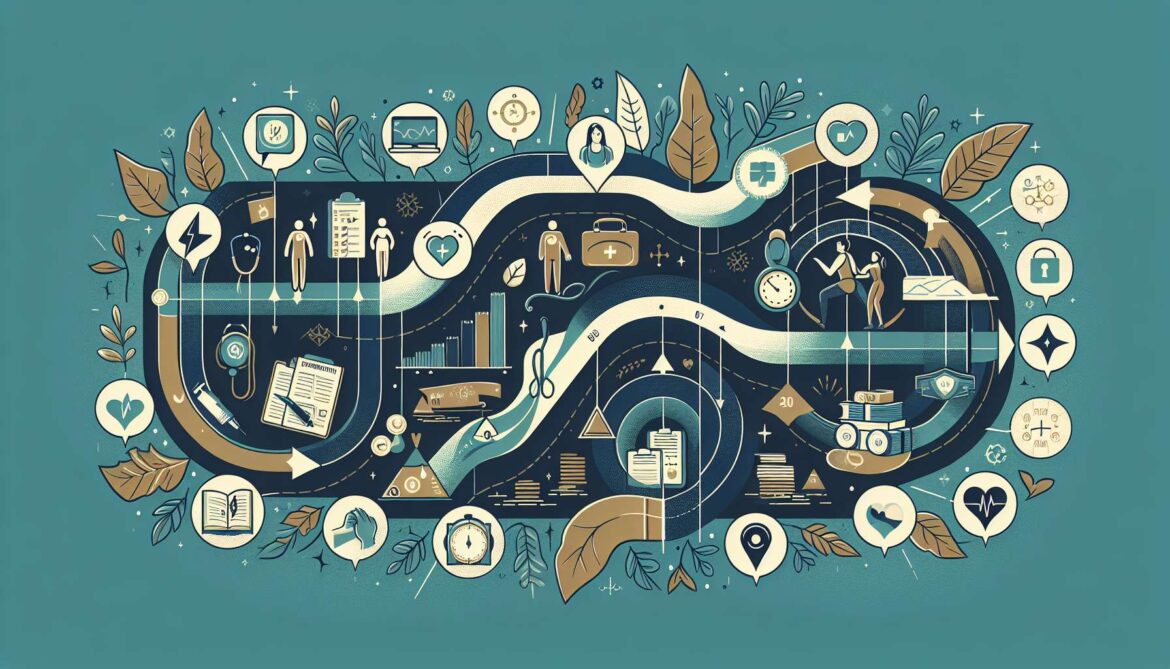Welcome to the final installment of our health series for IT professionals! We’ve covered the immediate risks, ergonomic solutions, and daily habits. Now let’s zoom out and talk about long term strategies that will sustain your health throughout your entire tech career.
This isn’t just about surviving the next sprint or product launch. It’s about thriving for decades in this field you love.
Professional Ergonomic Assessments: Worth the Investment
While self assessments are helpful, professional ergonomic evaluations can identify subtle issues you might miss. These assessments provide three critical benefits:
- Comfort optimization through precise adjustments that eliminate pressure points and awkward postures
- Injury risk reduction by identifying problematic work patterns before they cause damage
- Productivity enhancement as comfortable workers maintain focus longer and experience fewer interruptions
Modern assessment tools, including specialized apps that analyze posture through computer cameras, make professional evaluations more accessible than ever. These technologies can identify subtle postural deviations that might escape casual observation, providing data driven recommendations for workspace improvements.
The investment in professional assessment often pays dividends through reduced sick days, improved work quality, and enhanced job satisfaction. Consider getting an assessment annually or whenever you change workspaces.
The Standing Desk Strategy: Using It Right
Standing desks have become popular, but many people use them incorrectly. The goal isn’t to stand all day, it’s to alternate between sitting and standing throughout your workday.
The Optimal Pattern
Research suggests a ratio of sitting to standing of about 1:1 or 2:1 depending on your comfort level. Start conservatively, perhaps standing for 15 minutes every hour, then gradually increase as your body adapts.
When standing, use an anti fatigue mat to reduce pressure on your feet and legs. Wear supportive shoes, avoid standing in one position, shift your weight, and move around.
Most importantly, listen to your body. If standing causes discomfort, sit down. The variation itself is what provides the health benefits, not standing for extended periods.
Regular Physical Activity: Beyond the Desk
While desk exercises help, they’re not a substitute for regular physical activity outside of work. Aim for at least 150 minutes of moderate aerobic activity or 75 minutes of vigorous activity per week.
Activities That Counteract Sitting
Choose activities that reverse the effects of sitting:
- Swimming or yoga for full body flexibility
- Core strengthening exercises for better posture support
- Walking or cycling for cardiovascular health
- Resistance training to maintain muscle mass
- Stretching routines to maintain mobility
Find activities you actually enjoy. The best exercise is the one you’ll do consistently. If you hate running, don’t force it. Try different activities until you find what works for you.
Annual Health Checkups: Catching Issues Early
Schedule annual physical exams with your doctor. Early detection of issues like high blood pressure, high cholesterol, or blood sugar problems allows for intervention before they become serious.
Be honest with your doctor about your sedentary work environment. They can provide specific recommendations and monitor markers that are particularly relevant for desk workers.
Eye Exams
Don’t neglect your vision. Annual eye exams can detect problems early and ensure your prescription is current. Tell your eye doctor about your computer intensive work. They may recommend special computer glasses or specific lens treatments to reduce eye strain.
Work Life Balance: The Foundation of Long Term Health
No amount of ergonomic equipment or desk exercises can compensate for chronic overwork and burnout. Set boundaries around your work hours and stick to them.
The Disconnect Practice
Establish clear separation between work and personal time. When your workday ends, actually stop working. Close your laptop, silence work notifications, and engage in activities that have nothing to do with coding.
Your brain needs downtime to process information and recover. Constant connectivity and overwork lead to decreased productivity, increased errors, and burnout.
Sleep: The Most Underrated Health Strategy
Quality sleep is crucial for physical recovery, mental clarity, and long term health. Aim for 7 to 9 hours per night.
Sleep Hygiene for Developers
- Avoid screens for at least an hour before bed, the blue light disrupts your sleep cycle
- Keep your bedroom cool, dark, and quiet
- Maintain a consistent sleep schedule, even on weekends
- Avoid caffeine after 2 PM
- Use your bed only for sleep, not for working or watching content
Many developers sacrifice sleep for deadlines or late night coding sessions. This is a false economy. Well rested developers are more productive, make fewer mistakes, and are more creative than their sleep deprived counterparts.
Building a Support Network
Connect with other developers who prioritize health. Share strategies, hold each other accountable, and normalize healthy behaviors in your workplace culture.
If your company has a wellness program, participate. Many organizations offer gym memberships, standing desks, ergonomic assessments, or wellness coaching as benefits. Take advantage of these resources.
Tracking Your Progress
Consider tracking key health metrics over time:
- Pain levels and locations
- Energy levels throughout the day
- Sleep quality and duration
- Exercise frequency and type
- Stress levels
- Productivity and focus
This data helps you identify what strategies work for you and where you need to make adjustments. Many health apps can automate this tracking and provide insights over time.
Adapting as You Age
Your health needs will change throughout your career. What works in your twenties may not work in your forties. Stay flexible and adjust your strategies as needed.
Recovery takes longer as you age. You may need more frequent breaks, different exercises, or additional ergonomic support. That’s normal and expected. Adapt your approach rather than pushing through discomfort.
The Financial Perspective
Investing in your health isn’t just about feeling better, it’s financially smart. Consider the costs of ignoring health:
- Medical bills for treating chronic conditions
- Lost income from sick days or reduced productivity
- Potential career limitations from physical problems
- Decreased quality of life outside work
Compare this to the relatively small investment in a good chair, standing desk, professional assessments, gym membership, and quality food. The return on investment is enormous when you factor in your entire career.
Creating Your Personal Health Roadmap
Here’s a template for your long term health strategy:
Immediate (This Month)
- Implement ergonomic improvements from Part 2
- Establish daily habits from Part 3
- Schedule annual physical and eye exam
Short Term (Next 3 Months)
- Establish consistent exercise routine
- Optimize sleep schedule
- Consider professional ergonomic assessment
- Build healthy meal prep habits
Medium Term (Next Year)
- Invest in major ergonomic equipment if needed (standing desk, quality chair)
- Establish work life boundaries
- Develop stress management practices
- Build support network for accountability
Long Term (Career Span)
- Annual health checkups and adjustments
- Continuous learning about health optimization
- Adapt strategies as you age and circumstances change
- Mentor younger developers on health practices
When Prevention Fails: Treatment and Recovery
Despite your best efforts, you might still develop issues. That’s okay. Early treatment is key.
Treatment for established problems requires a multifaceted approach combining immediate symptom relief with long term corrective strategies. This may include:
- Physical therapy
- Ergonomic adjustments
- Stretching and strengthening programs
- Postural retraining
- Rest and recovery periods
Don’t rush recovery. Generally, the healing process cannot be hurried. Rest is a key treatment, the duration of which correlates directly with the severity of the injury.
The Cultural Shift We Need
The tech industry often glorifies overwork and neglects physical health. We celebrate developers who code through the night and skip meals during crunch time. This culture needs to change.
Be part of the solution. Model healthy behaviors. Take your breaks visibly. Talk about your exercise routine. Advocate for ergonomic equipment and reasonable work hours. Normalize leaving on time and disconnecting from work.
When senior developers prioritize health, it gives permission for everyone else to do the same.
Your Sustainable Career Starts Now
A career in IT can be incredibly rewarding, both intellectually and financially. But only if you can sustain it for the long haul. Your body is the platform that runs your career. Maintain it well.
The strategies in this four part series aren’t optional extras or nice to haves. They’re essential practices for anyone who wants a long, healthy, productive career in technology.
Start implementing these strategies today. Your future self will thank you. In 10, 20, or 30 years, you’ll still be coding comfortably, solving interesting problems, and enjoying your work because you took care of the physical foundation that makes it all possible.
Remember: sustainable high performance requires sustainable health practices. You can’t optimize your code if you’re too uncomfortable to focus. You can’t ship great products if you’re constantly dealing with pain or fatigue.
Take care of your body. It’s the only one you get, and your entire career depends on it.
Series Conclusion
Thank you for following this four part series on physical health for IT professionals. We’ve covered everything from immediate risks to long term strategies. The knowledge is here, now it’s up to you to implement it.
Your health journey is personal and ongoing. What works for someone else might not work for you. Experiment, adjust, and find your own sustainable approach.
Stay healthy, code well, and enjoy a long career doing what you love.
References
- EWI Works – Office Ergonomics for IT Professionals
- LookAway Blog – Office Syndrome: The Hidden Health Crisis (July 2025)
- Weber Knapp – Innovative Ergonomic Solutions: 2025 Trends (September 2025)
- Princeton University Health Services – Ergonomics and Computer Use
- On Demand Occupational Medicine – 5 Ways Office Affects Physical Health (September 2024)







